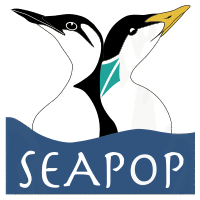Methods for mapping and monitoring seabirds
In SEAPOP, seabird colonies are mapped and monitored from land, air, and on the open sea. Below you will find general descriptions of the most important methods we use to obtain the knowledge that the programme focuses on and builds up. There is not enough space here to shed light on all the details and accompanying challenges, but those who are particularly interested will find a lot of additional information by searching in the most relevant publications. One can also approach the contact persons listed in the reviews of the different method descriptions, for further information.
The methodology must be quality-assured
All science places strong demands on the methods one chooses to use. SEAPOP requires not only that the results are statistically robust and adequately replicable, but also that the data collection follows standards throughout that allow for precise comparisons across populations, localities, and areas. This also applies in relation to comparable studies in other countries. International cooperation is therefore one of several important links in the quality assurance of methods, and good communication about and description of methodology is a prerequisite to creating reliable and relevant knowledge. Publication in well-reputed international professional journals with peer review (referees) is the best guarantee that the methods are up to standard. If international standards that can easily be referred to do not exist, the methods must be described in detail in order for the results to be published in this way. The SEAPOP community’s comprehensive production of such publications therefore shows that the work maintains a very high quality throughout in relation to the methodological approaches used.
















